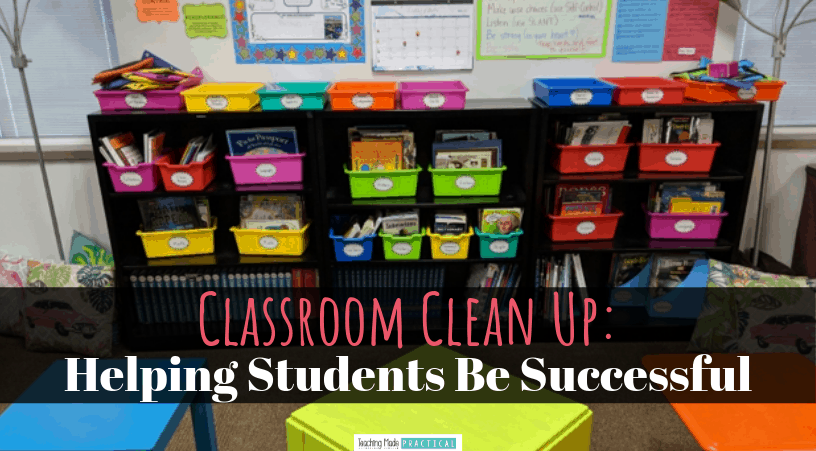
Keeping the Classroom Clean: The Quandry
It’s been a busy day, but keeping the classroom clean has not been a priority.
Not only are the students’ brains full and bodies antsy… gravity has done its job well in the classroom.
The floor is covered with pieces of paper, writing utensils, bits of trash, and sometimes-unidentifiable classroom paraphernalia! Chairs and books have been well-used to support education, but they have not all been returned to their assigned places; pillows that have cushioned the elbows and pockets of studying students are scattered into inviting corners of the room or left dangerously in the middle of a walkway.
As you glance at the clock while putting on your neon safety-vest to head outside and supervise dismissal, you realize that it will be impossible to right the room in just the few minutes that you might be able to squeeze out of your students’ willingness to help.
This somewhat stressful and overwhelming situation happens almost daily in classrooms around the country… You may even have experienced it yourself. It’s not a cheerful way to conclude a successful and exhausting day with 3rd, 4th, or 5th grade students!
Teachers (including myself) try all methods of clean-up tricks to create a symbiotic relationship between a needy classroom and helpful students… job charts of all shapes and sizes, classroom job rotations that range from daily to quarterly, sticks and clips or songs and elections, job applications or table-volunteers… you name it, a teacher has probably tried it!
Here is what has worked for me in my upper elementary classroom.
Classroom Cleaning Procedures: “A Picture Is Worth a Thousand Words”
Here is the basic outline (Steps 1-4). The first three steps will be the same for any teacher/classroom. The final step is where you will want to personalize what works best for you… and where you can keep things fresh by changing up your students’ motivation factor over the course of a year. 🙂
1. Take a picture of each of the different areas in your classroom, up close, and looking exactly the way you want it to look every afternoon when the students have gone home.
I divided my classroom into seven “regions.” These are areas in my room that are grouped by some shared attribute. Here are a couple of my clean-up regions:
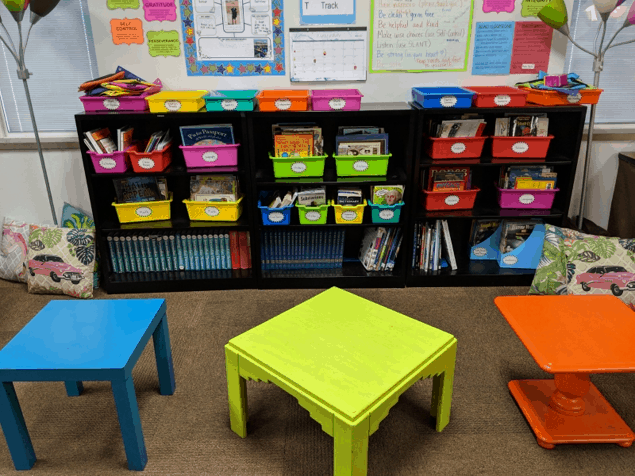
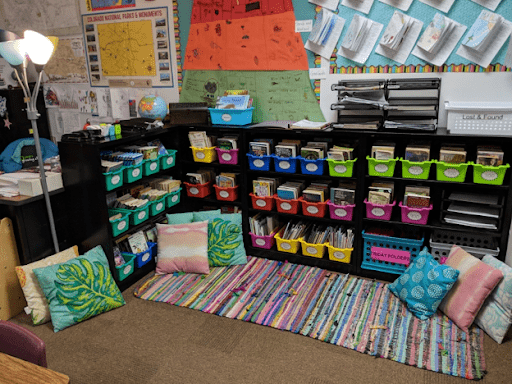
2. Type a short bullet-point style list of items to be done so that the area looks just like the photo… be precise!
Below are my lists for each of the regions shown above; notice how the directions even show how the tables should be oriented and the number of pillows in each spot. This clarity is a HUGE piece in students’ successful completion of the task. Not every item needs to be written on the list; this becomes overwhelming and tedious. Suffice it to say that if the picture shows it, it is a requirement.
For example, in the picture at the right (my fiction library) students know how the staplers, tape dispensers, 3-hole punchers, library check-out book and in-bins should look in order for the region to be ready to pass off even though they are not individually listed on the clean-up visual.
(Looking for ways to organize your library? Or set up a checkout system?)

3. Post each picture/list on the wall in the appropriate area of your classroom.
Combine the photo and list together (I printed mine, glued to colored paper, then laminated, and simply scotch-taped it onto the wall, cupboard, or white board in that region). Yours might look something like this:
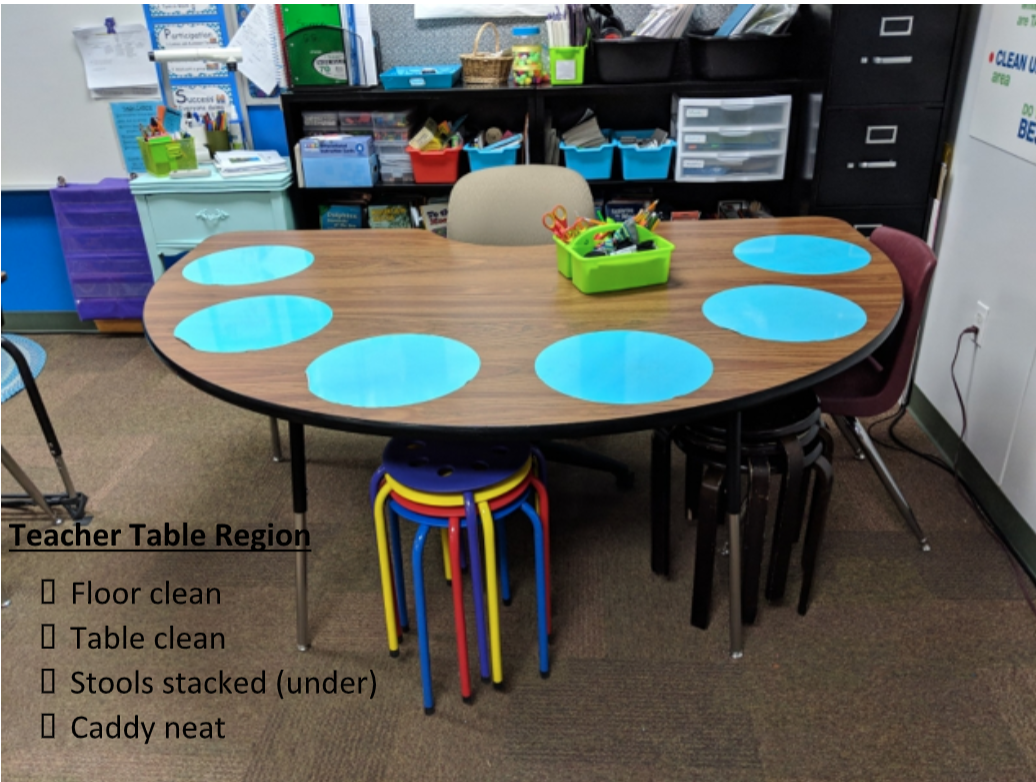
Assigning Clean Up Crews and Motivating Students
4. Here is where I have tried a few different things throughout the year, and I am excited to expand on new ideas this year!
No doubt, you will have some terrific ways of making these keeping the classroom clean procedures successful in your own 3rd, 4th, or 5th grade classroom. 😊
In the beginning…
I began this clean-up system mid-year. A verbal explanation with each picture and checklist was a good way to answer any questions that arose. (One note that is important for my clean-up regions is that once students have been assigned their region for clean-up, they first get backpack, lunchbox, coat and then wear their gear during the clean-up process. This removes materials that do not belong in the classroom from interrupting the clean-up).
From then on, I would simply announce which groups of students would be responsible for which regions that day (I never told them in advance so that they would be cautiously aware throughout the day of keeping things picked up… just in case they were assigned that particular area at the end of the day) and dismiss them to work.
(Find more ideas on managing dismissal here.)
Some days I would assign regions by sitting arrangements (rows, tables, etc.), while other days I would assign them by matching shirt colors, sock colors, hair, eyes, etc. This way, students regularly practiced working as a team with varied student-groups. Student-groups do not have to have the same number of students… the focus is on the regions matching what the picture shows, not students.
The happy ending…
Set a signal for when a region is ready to be checked. I had the students in a region stand silently in the middle of their region with one hand in the air.
While training my crew on clean-up regions, I was their checker. When I saw students in a region ready, I would come to them and look from the region to the picture. If the region matched the picture, I would give them the thumbs-up; if it did not, I would simply tell them “check the picture” (returning to them only when they were once again standing in the checking-position). Then, I quickly moved on to the next region signaling readiness.
Students quickly learned to carefully study region-pictures, which saved on checking-time for the rest of the year. For the first few weeks, I would reward each student with a small candy once their region was passed off (the thumbs-up signal sent them to my candy jar).
It took the kids about 8 minutes or so to completely clean the classroom as they got used to requirements in each area. As time went on, the entire classroom clean-up (from pencil re-stocking to picking up trash hidden behind the trash cans and lining up desks with pushed-in chairs to having empty lunch carts and lost-and-found bins and so on…) was completed in just 5 minutes!
Have some fun…
Once students have mastered the knowledge and ability to clean each region, then students can be made checkers for regions (a beautiful thing)! Races are fun… with only the first two regions completed each day earning rewards, OR regions who hurry and are not truly ready when they first-signal readiness forfeiting whatever the prize may be (time, class tickets, cheers, etc). Motivation stays high when it changes from time to time.
Yes, there were even days when we ran out of time for any reward other than the satisfaction of entering a beautifully clean, organized classroom the next morning. And that was still worth it for a happy teacher, a clean classroom, and students who have the satisfied feeling that they did it perfectly, “all by themselves!”
Submitted by Tamara Leavitt of Tamara's Teacher Toolbox, 4th grade teacher in Colorado
“I am the lucky wife of my sweetheart for over 23 years, a blessed mother of four amazing children, and an educator at school and at church!"
You might also like some of these other classroom management ideas for upper elementary students.
Never Stress Over Sub Plans Again!
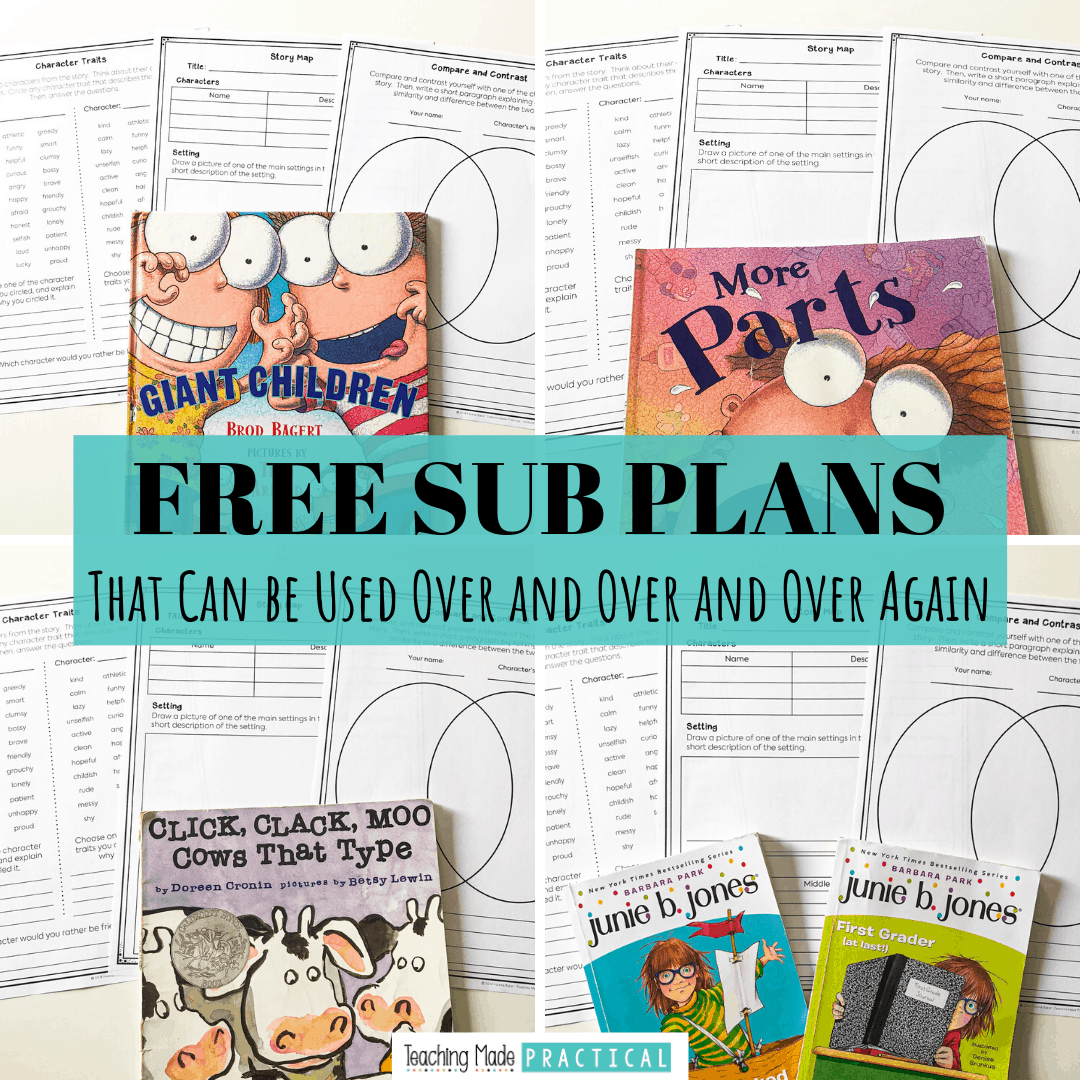
Make copies, find a fiction book, and you'll be ready for any emergency that comes your way!
